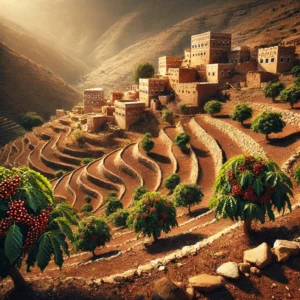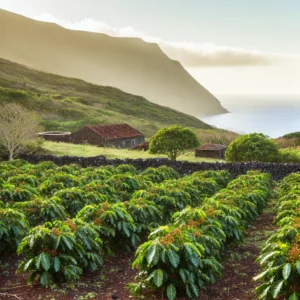Coffee, a beloved beverage enjoyed by millions around the globe, owes its enchanting flavors and aromas to the magical world of coffee beans. These humble beans, grown in diverse regions and processed with care, hold the key to a rich and diverse sensory experience. From the lush plantations nestled in the mountains to the skilled hands that harvest and process them, coffee beans embark on a captivating journey before gracing our cups. In this article, we invite you to join us on a voyage through the realm of coffee beans, as we explore the various types, origins, and processing methods that contribute to the diverse tapestry of coffee flavors we savor.
The world of coffee beans is vast and vibrant, with countless varieties each possessing its own unique characteristics. Arabica, the most widely consumed and cherished species, delights with its elegant and nuanced flavor profiles. Grown in high-altitude regions across Central and South America, Africa, and Asia, Arabica beans demand meticulous care and attention. Renowned for their delicate floral undertones, bright acidity, and subtle fruitiness, Arabica beans have become a staple in specialty coffee due to their complex flavors and refined profiles.
On the other hand, Robusta beans, named for their robust nature, offer a distinctly different experience. Cultivated in lower altitude regions, Robusta beans are known for their strong and bold flavors. With a higher caffeine content and a fuller body, they deliver a powerful and bitter taste. Often associated with earthy, woody notes and hints of chocolate, Robusta beans are commonly used in espresso blends for their ability to create a rich crema and provide a potent caffeine kick.
As we delve deeper into the world of coffee beans, we encounter a rich tapestry of origins. From the fertile volcanic soils of Guatemala to the misty highlands of Ethiopia and the mountainous regions of Sumatra, each origin brings its own terroir, climate, and growing conditions. These factors profoundly influence the flavors and aromas of the beans, allowing coffee enthusiasts to embark on a journey through different profiles and experiences.
The processing methods employed after harvest play a crucial role in shaping the final flavor profiles of the beans. Whether it’s the washed (or wet) process that showcases the clean and bright flavors, the natural (or dry) process that infuses the beans with the fruit’s sugars for a sweeter and fruitier cup, or the honey process that strikes a delicate balance between the two, each method adds its touch of alchemy to the beans’ journey.
In conclusion, the world of coffee beans is a captivating realm that invites exploration and appreciation. From the elegant flavors of Arabica to the bold strength of Robusta, and from the diverse origins to the intricate processing methods, each aspect contributes to the symphony of flavors and aromas found in our cups. So, let us embark on this magical journey together, exploring the different types of coffee beans and unraveling the enchantment they hold. Prepare to be captivated by the rich tapestry of flavors that await you in the realm of coffee beans.
Arabica: The Elegance of Flavor
One of the most widely cultivated coffee species, Arabica beans, captivate with their elegant and nuanced flavor profiles. Thriving in high-altitude regions across Central and South America, Africa, and Asia, Arabica beans demand meticulous care and attention. Renowned for their sweet, fruity notes, delicate floral undertones, and gentle acidity that imparts brightness, Arabica beans have become a staple in specialty coffee due to their complex flavors and refined profiles.
Robusta: The Powerhouse of Strength
Robusta beans, named for their robust nature, pack a powerful punch with their strong and bold flavors. Cultivated in lower altitude regions, Robusta beans boast a higher caffeine content than Arabica beans, delivering a full-bodied and bitter taste. Often associated with earthy, woody notes and hints of chocolate, Robusta beans are commonly utilized in espresso blends for their ability to create a rich crema and provide a potent caffeine kick.
Single-Origin vs. Blends: Exploring Diversity
Coffee enthusiasts have the choice between single-origin and blended beans, each offering a unique exploration of flavors. Single-origin beans hail from a specific geographic region or even a single farm, allowing coffee lovers to experience the distinct characteristics and nuances of a particular origin. On the other hand, blended beans combine multiple origins to create a harmonious balance of flavors, offering complexity, consistency, and the opportunity to craft desired taste profiles. Whether embarking on a journey through the distinct flavors of single-origin coffees or indulging in the artistry of well-crafted blends, both options open up a world of flavors waiting to be discovered.
Processing Methods: Unveiling Flavors
Coffee beans undergo diverse processing methods, greatly influencing their final flavor profiles. The most common techniques include the washed (or wet) process, natural (or dry) process, and honey process. In the washed process, beans are pulped, and the mucilage is removed before drying, resulting in a clean and bright flavor profile. The natural process involves drying the cherries with the beans inside, allowing the fruit sugars to infuse the beans, resulting in a sweeter and fruitier cup. The honey process combines elements of both the washed and natural methods, resulting in a coffee with unique flavor characteristics, ranging from floral and fruity to notes of caramel and chocolate.
Specialty Coffee: Elevating the Experience
Specialty coffee represents the pinnacle of quality in the coffee industry. These exceptional beans are meticulously cultivated, hand-picked, and processed with meticulous care, often sourced from specific regions and farms. Specialty coffee roasters expertly roast these beans to enhance their inherent qualities, delivering an extraordinary coffee experience. From the first sip to the lingering aftertaste, specialty coffee embodies the artistry and passion of coffee enthusiasts and professionals alike, showcasing the potential for an unforgettable journey through flavors and aromas.
Conclusion
The realm of coffee beans is a captivating universe brimming with an array of flavors, aromas, and sensory experiences. Whether your palate prefers the elegance of Arabica or the boldness of Robusta, exploring the diverse types of coffee beans allows you to embark on a remarkable voyage of discovery within the world of coffee. From the sprawling plantations where beans are nurtured to the meticulous processing methods employed, every step contributes to the symphony of flavors that await in each cup.
As you dive deeper into the world of coffee beans, you’ll uncover the intricacies of different origins, such as the high-altitude plantations of Ethiopia, the volcanic soils of Guatemala, or the mountainous regions of Sumatra. Each origin brings its own terroir, climate, and growing conditions, resulting in unique flavor profiles that reflect the essence of their land.
Exploring the processing methods further reveals the artistry behind crafting exceptional coffee. Whether it’s the washed process that showcases the pure essence of the beans, the natural process that embraces the fruits’ inherent sweetness, or the honey process that strikes a delicate balance between the two, each method adds its touch of alchemy to the final cup.
Moreover, the roasting process is where the true magic unfolds. Roasters carefully orchestrate the transformation of green coffee beans into aromatic wonders, carefully adjusting time, temperature, and techniques to unlock the beans’ full potential. Light roasts showcase delicate nuances and bright acidity, while medium roasts balance flavors and acidity, and dark roasts deliver deep richness and bold flavors.
To truly appreciate the magic of coffee beans, consider experimenting with different brewing methods. From the simplicity of a classic French press to the precision of a pour-over, each method accentuates different aspects of the beans, allowing you to savor the nuances and discover new dimensions of flavor.
In conclusion, the world of coffee beans is a captivating realm that invites exploration, experimentation, and appreciation. From the elegant flavors of Arabica to the robust strength of Robusta, the choices are vast, and the journey is endless. So, grab your favorite brewing apparatus, embark on a quest to discover new beans, and let the magic of coffee beans transport you to a world of extraordinary flavors and unforgettable experiences. Cheers to the enchantment of coffee!



